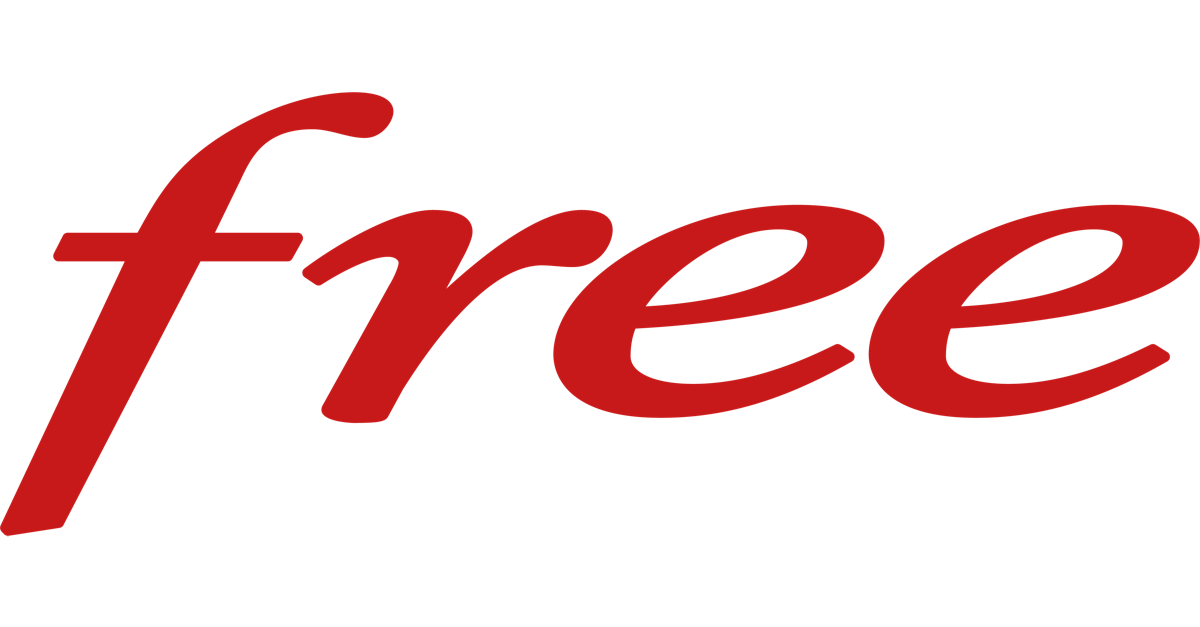Unveiling The 'Free Undresser' AI: Tech, Ethics, & Reality
In an increasingly digital world, the lines between reality and illusion are constantly blurring, and at the forefront of this transformation lies the intriguing, yet often controversial, technology known as the "free undresser" AI. This innovative application, also referred to as an AI clothes remover, has captured significant attention for its remarkable ability to alter digital images, offering a glimpse into a future where visual content can be manipulated with unprecedented ease. From generating new outfit styles to, more controversially, creating "deep nude" images, these tools present a complex blend of creative potential and profound ethical challenges.
The rise of artificial intelligence has brought forth a myriad of tools designed to simplify and enhance our digital lives. Among these, the AI clothes remover stands out, promising to effortlessly remove clothes from photos or even swap outfits with just a few clicks. While some applications of this technology might lean towards fashion design or virtual try-ons, the more contentious uses, such as generating images of individuals "without clothes" or in "bikini underwear," raise serious questions about privacy, consent, and the potential for misuse. This article delves deep into the mechanics, ethical implications, and broader societal impact of these powerful "free undresser" tools, urging a critical examination of their capabilities and the responsibilities that come with them.
Table of Contents
- Understanding the "Free Undresser" Phenomenon
- The Technology Behind AI Clothes Removal
- Navigating the Ethical Minefield of AI Undressers
- Practical Applications (and Misapplications) of AI Undressers
- Choosing a "Free Undresser" Tool: What to Look For (and Avoid)
- The Future of AI Image Manipulation and Its Societal Impact
- Protecting Yourself in the Age of AI Clothes Removers
- Conclusion: Responsible Engagement with AI's Frontier
Understanding the "Free Undresser" Phenomenon
The term "free undresser" has become a colloquial way to refer to a specific category of AI-powered image manipulation tools. These applications, often available online and sometimes at no cost, leverage advanced artificial intelligence algorithms to modify photographs, specifically targeting clothing elements. The core promise is simple: "Quickly and effortlessly remove clothes from photos." This capability ranges from benign applications, like changing outfits for digital fashion design, to highly controversial ones, such as generating "deep nude" images of individuals. Many platforms market themselves as the "best undress AI available online," boasting "premium AI undressing technology that creates stunning, realistic results every time." They claim to offer "unparalleled creative freedom and privacy assurance in digital artistry," a claim that warrants significant scrutiny given the potential for severe privacy breaches. The ease of use is a common selling point: "Simply upload your image or photo and use the brush tool to select which parts to remove and the AI will accurately remove the clothes." The allure of a "free undresser" lies in its accessibility and the apparent simplicity with which complex image alterations can be performed, making it a topic of both technological fascination and profound ethical concern.The Technology Behind AI Clothes Removal
At its heart, the "free undresser" operates on sophisticated artificial intelligence, primarily deep learning models. These models are trained on vast datasets of images to understand patterns, textures, and human anatomy. When a user uploads a photo, the AI analyzes the image, identifies clothing elements, and then uses its learned understanding to generate what it predicts would be underneath. This isn't merely a simple erase function; it's a generative process where the AI essentially "fills in" missing information based on its training. The output is often remarkably realistic, which is precisely why these tools are so powerful and, simultaneously, so dangerous. The technology allows for "seamlessly undress characters in images with a powerful photo undresser tool," offering "innovative app that utilizes advanced artificial intelligence to seamlessly remove clothing from images."How "Deep Nude" Technology Works
The term "deep nude" specifically refers to the application of deepfake technology to create non-consensual explicit imagery. While a "free undresser" might be a general term for AI clothes removers, the "deep nude" aspect highlights its most controversial application. These tools, as described in the "Data Kalimat," allow users to "create images of the target person naked (deep nude), without clothes, or wearing bikini underwear." This is achieved by sophisticated neural networks, often Generative Adversarial Networks (GANs), which are adept at generating highly realistic images. One part of the network (the generator) creates the image, while another part (the discriminator) tries to determine if the image is real or fake. Through this adversarial process, the generator learns to produce increasingly convincing outputs. Users can "upload photos, set specific age and body type traits, and receive a processed image within seconds." The speed and apparent realism of these "AI nude arts" are what make them particularly alarming, as they lower the barrier for creating and disseminating harmful content.Beyond Simple Editing: AI's Capabilities
Beyond the controversial "deep nude" applications, the underlying technology of an AI clothes remover can also be used for more innocuous purposes. The "Data Kalimat" mentions the ability to "swap clothes from any photo using the free AI clothes remover" and to "create stylish, customized looks for images and designs in seconds." This points to potential applications in virtual fashion try-on, digital avatar creation, or even artistic expression where clothing changes are part of a creative process. For instance, a designer could use such a tool to quickly visualize how different garments would look on a model without needing physical samples or complex photo shoots. The capability to "easily remove and change clothes with the AI clothes remover tool" signifies a broader shift in digital content creation, where AI is becoming an integral part of visual editing, offering "unrivaled quality undress images of individuals" for various purposes, some legitimate, many not.Navigating the Ethical Minefield of AI Undressers
The existence of a "free undresser" tool, especially one capable of generating "deep nude" images, plunges us into a complex ethical minefield. The ease with which such images can be created and disseminated poses significant threats to individual privacy, reputation, and mental well-being. The core ethical dilemma revolves around consent and the potential for non-consensual sexual imagery (NCII). While some tools might claim "privacy assurance," the very nature of generating explicit content from non-explicit photos without explicit consent is a direct violation of privacy and dignity. This is a critical YMYL (Your Money or Your Life) issue, as it directly impacts personal safety, legal standing, and psychological health.Consent, Privacy, and Digital Harm
The paramount ethical consideration with any "free undresser" or AI clothes remover is consent. Creating or sharing images of individuals, especially those that are explicit, without their explicit, informed consent is a severe violation of their privacy and autonomy. Such actions can lead to immense digital harm, including reputational damage, emotional distress, cyberbullying, and even real-world harassment. The "Data Kalimat" notes that these tools allow users to "create images of the target person naked (deep nude)," which, when done without consent, constitutes a form of digital sexual assault. Victims often face significant challenges in getting such images removed from the internet, and the psychological impact can be long-lasting. The proliferation of "free undresser" tools makes it easier for malicious actors to engage in such harmful behavior, underscoring the urgent need for robust ethical frameworks and legal deterrents.The Legal Landscape and Consequences
The legal landscape surrounding AI clothes removers and deepfake technology is rapidly evolving, but the consensus among legal experts is clear: creating or distributing non-consensual explicit images, regardless of whether they are real or AI-generated, is illegal in many jurisdictions. Laws against revenge porn, image-based sexual abuse, and the creation of child sexual abuse material (CSAM) are increasingly being updated to include AI-generated content. For instance, in the United States, several states have enacted laws specifically targeting deepfake pornography, and federal legislation is being considered. Internationally, countries like the UK, Australia, and parts of the EU have also strengthened laws to combat the spread of non-consensual intimate images. Individuals found guilty of using a "free undresser" for illicit purposes face severe penalties, including hefty fines and lengthy prison sentences. Beyond criminal charges, civil lawsuits for defamation, emotional distress, and privacy invasion are also possible, leading to significant financial and reputational consequences for perpetrators.Practical Applications (and Misapplications) of AI Undressers
While the "deep nude" aspect of AI clothes removers rightly dominates ethical discussions, it's important to acknowledge the broader spectrum of potential applications, both legitimate and illegitimate. On the legitimate side, the core technology of an "AI clothes remover" could be harnessed for innovative purposes in industries like fashion, media, and entertainment. Imagine virtual try-on experiences where customers can see how clothes look on their own body type without physical garments, or rapid prototyping for designers to visualize new collections. The ability to "easily remove and change clothes with the AI clothes remover tool" could streamline creative workflows. However, the "misapplications" are far more prevalent and concerning. The "Data Kalimat" explicitly states the ability to "generate AI nude arts with our AI tool," highlighting the primary misuse. This includes the creation of non-consensual explicit imagery (NCII), which is a form of digital sexual abuse. It also extends to creating fake explicit content for blackmail, harassment, or to damage reputations. The ease with which "Live3D's AI clothes remover help anyone remove clothes from pictures for free" means that these tools are accessible to a wide audience, including those with malicious intent. The focus on "free" access further exacerbates the risk, as it removes any financial barrier to engaging in harmful activities.Choosing a "Free Undresser" Tool: What to Look For (and Avoid)
Given the pervasive nature of AI clothes removers, some users might encounter or even seek out a "free undresser" for various reasons, including curiosity or exploring the technology's capabilities. If one were to consider such a tool, understanding what to look for – and, more importantly, what to avoid – becomes critical, especially from an ethical and security standpoint. First and foremost, *avoid any tool that explicitly promotes or facilitates the creation of non-consensual explicit imagery.* This is not only unethical but also illegal. Many tools, like "clothoff.io" or those promising "deep nude" capabilities, fall into this high-risk category. Instead, if you're exploring AI image manipulation for creative or artistic purposes, look for tools that emphasize ethical use, explicit consent features, and clear terms of service that prohibit the creation of harmful content. Prioritize tools that focus on "creating stylish, customized looks for images and designs" rather than explicit content generation. Be extremely cautious about uploading personal photos to any "free undresser" platform, as data privacy and security can be compromised. Many of these free services might collect your data, and there's no guarantee how your uploaded images will be used or stored. Reputable AI image editing tools exist that offer clothing manipulation features for legitimate purposes without venturing into the dangerous territory of non-consensual content. Always verify the developer's reputation and read user reviews, but remain skeptical of any service that seems too good to be true, especially if it promises to "undress" people.The Future of AI Image Manipulation and Its Societal Impact
The emergence of the "free undresser" is just one facet of a much larger trend in AI image manipulation. As artificial intelligence continues to advance, the ability to generate, alter, and even synthesize realistic images and videos will become increasingly sophisticated and accessible. This has profound implications for society, touching upon everything from media literacy and truth perception to the very nature of identity and trust. The "Data Kalimat" hints at this future, noting that "Undress AI is an advanced AI application designed to modify images to create the illusion that individuals are unclothed," and that "this tool leverages sophisticated techniques to alter photographs accurately." In the future, distinguishing between real and AI-generated content will become a significant challenge for the average person. This "reality gap" could lead to widespread misinformation, erosion of trust in visual evidence, and new forms of online harassment and fraud. On the positive side, AI image manipulation could revolutionize creative industries, enabling unprecedented artistic expression and efficiency in design. However, the societal impact of tools like the "free undresser" necessitates a proactive approach from policymakers, tech developers, and educators. We need stronger legal frameworks, better detection technologies for AI-generated fakes, and enhanced digital literacy programs to equip individuals with the critical thinking skills needed to navigate this evolving digital landscape. The conversation around AI clothes removers is not just about a niche tool; it's a microcosm of the broader ethical challenges posed by rapidly advancing AI.Protecting Yourself in the Age of AI Clothes Removers
In an era where a "free undresser" can effortlessly alter images, protecting oneself and one's digital footprint becomes paramount. The first line of defense is awareness. Understand that such tools exist and are becoming increasingly sophisticated. Be mindful of the photos you share online, especially those that could be used as source material for AI manipulation. While it's impossible to completely prevent someone from using your image, minimizing your public exposure, particularly of full-body shots, can reduce the risk. Furthermore, be critical of what you see online. If an image seems suspicious or out of character, question its authenticity. Tools for detecting deepfakes are emerging, though they are not foolproof. If you become a victim of non-consensual explicit imagery created by an AI clothes remover, know that you have rights and resources. Report the content to the platform where it's hosted, contact law enforcement, and seek legal counsel. Organizations dedicated to combating image-based sexual abuse can also provide support and guidance. Remember, the creation and distribution of such content is illegal and a serious violation of your privacy. Do not hesitate to seek help and pursue justice. The "Data Kalimat" mentions "Download Fix The Photo Body Editor&Tune to test the best undress app that uses AI and manual safe edits to undress you in photos," highlighting that some tools even attempt to frame their "undressing" features as "safe edits," which further blurs lines and necessitates extreme caution from users.Conclusion: Responsible Engagement with AI's Frontier
The "free undresser" AI represents a powerful technological advancement, capable of both remarkable creative feats and deeply harmful misuses. As we've explored, while the technology can "easily remove clothes from photos online or swap clothes from any photo," its most controversial application lies in the generation of "deep nude" images without consent. This capability raises critical questions about privacy, digital harm, and the evolving legal landscape. Navigating this complex frontier requires a multi-faceted approach. For developers, it means prioritizing ethical design and implementing robust safeguards against misuse. For policymakers, it demands agile and comprehensive legislation that addresses the unique challenges posed by AI-generated content. And for individuals, it necessitates heightened digital literacy, critical thinking, and an unwavering commitment to consent and privacy. The allure of a "free undresser" might be strong, but the potential for devastating consequences far outweighs any perceived benefit when used irresponsibly. Let us engage with AI's incredible potential not with blind enthusiasm, but with informed caution, ensuring that innovation serves humanity responsibly. What are your thoughts on the ethical implications of AI clothes removers? Share your perspective in the comments below, or explore our other articles on the future of AI and digital ethics.- Camila Cabello Weight
- Kirstentoosweet Nude Onlyfans
- Link Unblocker
- Sophia Deso Onlyfans Leaked
- Shae Mccombs Husband

free free free

Assistance Free - Installer mon Player TV Free 4K

When "Free" is Not Actually Free - Lowey Dannenberg